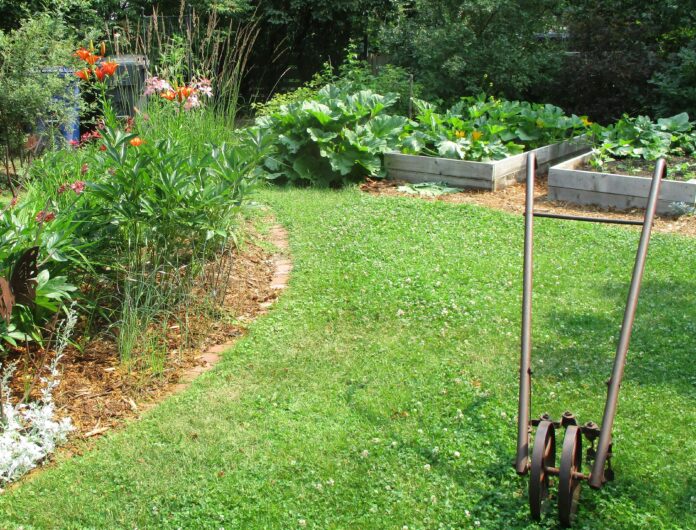by Bernadette Vangool
No-till gardening is a technique in which the gardener mimics nature by adding organic matter to the surface of the soil. In nature, leaves fall and grasses and flowers die off. They are incorporated into the soil by millions of little creatures, fungus, bacteria and others large and small. These organisms work continuously to turn dead organic matter into nutrients which feed the new growth of plants in the immediate area.
In contrast, the till method incorporates organic matter into the soil directly by tilling or manual digging. Tilling disrupts the cycle of fungal, bacterial and insect activity and thus creates an imbalance in the existing ecosystem. In the short term, the till method results in more immediate greater productivity, while the no-till method enriches the soil with organic matter over a longer period of time.
No-till gardening is a relatively new phenomenon. Traditional gardening has usually depended on the till method. People who grew up with the till method, which has been very successful for them, are reluctant to change and adopt new ways. Both methods have pros and cons and perhaps the best course of action is to adopt a portions of both methods in your garden practices.
Soil is improved over time when covered with at least 4 inches of organic material which decomposes slowly and is incorporated naturally. However, it is difficult to germinate small seeds in a deep mulch. Mulched soils tend to warm up more slowly in spring, an advantage in perennial gardens as it protects plants from late spring frost damage. For the vegetable gardener, facing an already limited number of frost free days in our climate, it shortens the growing season even further. For those of us with heavy clay soils, it may take years to “soften” the soil.
The major disadvantage of simply tilling soils is that they do not retain moisture as well. It can also lead to water run off, resulting in the leaching of soil nutrients, and general erosion. Tilling, while breaking up the soil structure, may bring the larvae of beneficial and not so beneficial insects to the surface, thus eradicating pests by interrupting their life cycle. But weed seeds will also be disturbed and given an opportunity to germinate and flourish in the upcoming growing season. Either method of gardening will see a reduction of unwanted weeds over time, assuming that weed control is practiced by pulling, deadheading and mulching.
Making the transition from conventional tilling to a more sustainable method of gardening may take some adjustments. It helps to define your garden beds by creating permanent pathways. These should be covered with mulch to discourage weeds. In a smaller garden, planting boxes can be constructed to easily define the vegetable beds. Defining these areas gives you the freedom to mix it up a bit. For example, vegetables with large seeds such as corn, peas and beans as well as crops that are transplanted into the garden, can be planted in the no-till beds with the heavy mulch. The small seeded crops such as lettuce, carrots and spinach can go in the tilled beds that provide easier germination. The tilled beds can be rotated throughout your garden to discourage pests from invading sections of your garden over time. This includes the dreaded slugs, which seem to be more prevalent as more and more people are switching to no-till. Pick a sunny day in spring or fall, till your garden and let the pests bask in the sunshine until the birds find them.
Whichever method of gardening you decide to embrace, don’t skimp on the inputs. Every garden benefits from copious amounts of well rotted manure and compost, and a good regimen of watering. Happy gardening everyone!
The opinions expressed above are those of the writer, a long term member of the Saskatchewan Perennial Society.
This column is provided courtesy of the Saskatchewan Perennial Society (SPS; saskperennial@hotmail.com ). Check our website saskperennial.ca) or Facebook page (facebook.com/saskperennial). All Saskatchewan Perennial Society events are on hold until further notice.


